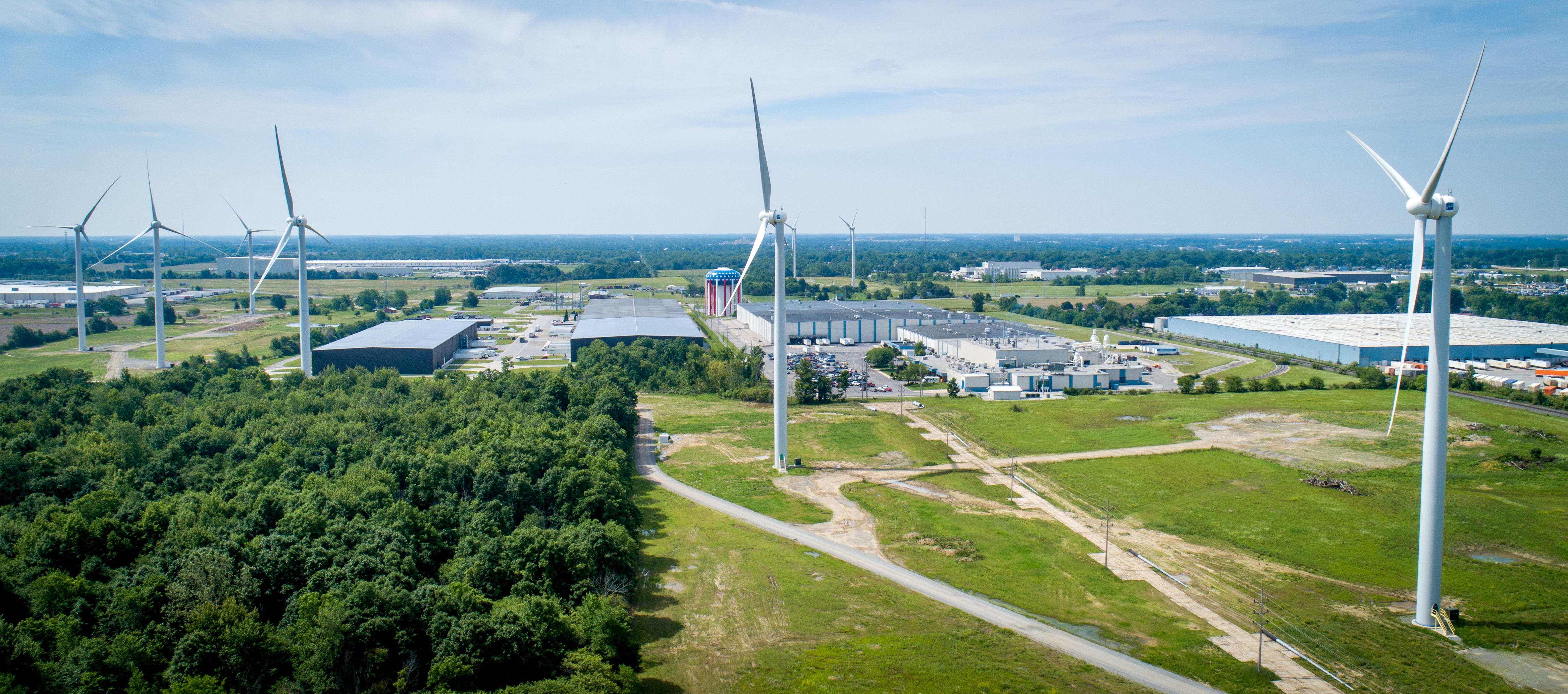SITE PATH
ONE POWER FEED

SUBSCRIBE
CONNECT WITH US
News Filters

This episode really puts the “talk” in Technician Talk!
Constructing wind energy projects requires precise coordination among many moving parts. How does One Energy do it? Do we memorize the exact timing of each step and hope everything goes smoothly? Do we yell down from the top of a 250-foot turbine tower to direct crane operators? Does one person do it all alone so there is no miscommunication?
Of course not! One Energy technicians must communicate effectively and efficiently during construction. That’s why our radio communication technology must be top notch – and each member must know how to use it properly and safely.
Join Fleet Field Manager Lukas as he walks us through One Energy’s radio model, its functions, how it’s used in the field, and the safety element of using radios while building projects. Plus – listen in on some excellent voice acting from our OE staff as they simulate communication scenarios (both proper and poor!) during a rotor fly.
Technician Talks can also be found on our LinkedIn, Facebook, and Twitter – and be sure to subscribe to our You Tube channel for more One Energy content!

I am a lawyer, but as in-house counsel for an energy company and an executive I also hire a lot of lawyers. Many people don’t understand why I do this. They figure one lawyer can handle most things. And when they ask me why I hire so many lawyers, I give them a simple analogy that drives the point home:
If you have cancer, you don’t see a cardiologist or your family doctor. You see the best oncologist you can.
The same concept applies to lawyers. Lawyers specialize. And you need the absolute best of the best to guide your thinking or you are in big trouble.
Why is that? Because a lot is on the line. Companies, like individuals, hire lawyers to do two things: 1) to get them out of big trouble and 2) to prevent them from getting into big trouble in the first place. People hire lawyers to help them on the worst day of their life, and to prevent them from having the worst day of their life.
And yet, while lawyers are responsible for so much, I often find that the lawyers I talk to are inhibited by what most lawyers hate most about the profession: the billable hour.
I probably don’t have to say this, but lawyers are expensive. Most of the lawyers I hire are between $300 and $1,200 an hour.
Yes, $1,200 an hour.
These lawyers typically bill in 6-minute increments. And because they are so expensive, there is a pressure from clients for them to do things as quickly and efficiently as possible.
For some of the more straightforward issues that lawyers deal with daily, this system works. They don’t need a lot of time to process what is in front of them and can skip straight to the work.
But for big, complicated, legal questions and problems that have never been solved, it takes time. Time to gather information from the client. Time to think about it. Time to reflect. Time to apply all of your expertise, as well as the expertise of others. Time to strategize on the best way forward.
For solving the unknown problem, efficiency doesn’t cut it – because constantly striving for efficiency encourages you to give less time to the problem than it may deserve.
So, what is my lesson for the lawyers? Be flexible. Consider setting up monthly retainers where you bill a flat amount every month. Consider contingency fees. Consider setting up your firm so it encourages partners to collaborate with each other as experts and not hog their clients to themselves.
So lawyers, as an in-house counsel and executive, I can say honestly that I don’t need your time. I need your intelligence, your expertise, and your creativity. I need you to help me on the worst day of my company’s life and to prevent that worst day from happening in the first place. I need you to see the problem I don’t see. And I really don’t care what billing mechanism you use. Set up your business and your arrangements with your clients in a way that allows you to solve the unknown problem, and you will be invaluable.
Katie Treadway is the Head of Regulatory Affairs at One Energy.

This aerial photo shows various wind turbine components at a Wind for Industry construction site.
Counter-clockwise from left are three blades, four tower sections, a permanent magnet direct drive generator, a palletized tool kit used by our Construction Team, the circular turbine foundation pedestal (the brown circle is the anchor bolts that attach to the base tower section), a green step-up transformer, and a blue junction box. All of these parts play an important role in the finished product, which now powers a nearby manufacturing facility.
Check out the three blades – they’re shipped and stored in metal stands, which hold the blades off the ground and protect them prior to installation.
Fun fact: while each blade weighs more than 18,000 pounds, the individual blade weights can vary from set to set. That said, the weight of blades within a set are consistent – that is, the three blades used on any given turbine (like the ones below) will have weights that are extremely similar.
(Never miss a WindView – follow us on Twitter, Facebook, and Instagram!)
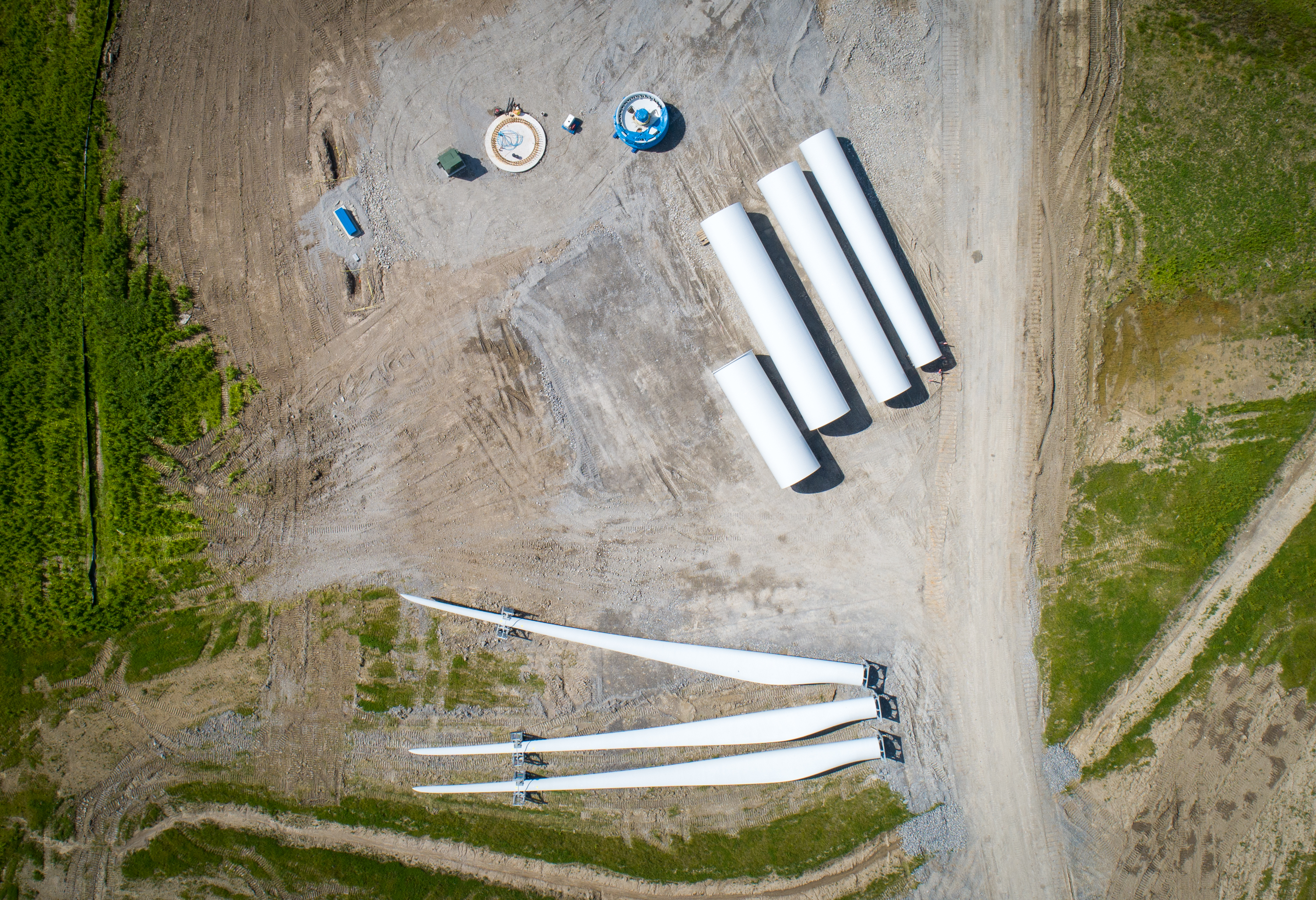

In a previous episode of our Science Shorts, we learned about the difference between “energy” and “power.”
In today’s Wind Study, we’ll be applying the concepts of energy (the ability to do work) and power (the rate at which work is done) to One Energy’s Wind for Industry projects. Take a moment to review the concepts of energy and power by watching our short video here. Then download this week’s Wind Study Homework Questions – we’ll post the answers Friday.
And remember, our Wind Study homework questions can also be found on our Facebook and Twitter accounts.


At One Energy, there is no singular path to success. In fact, we believe that our team members’ varied backgrounds and skillsets is a tremendous source of strength.
In this edition of Climb to the Top, join One Energy Technician Kerry Gaines as she describes her professional journey from tending bar to terminating electrical cables. Learn about the role of wind energy technician, as well as some of the electrical work that Kerry executes during the construction of a Wind for Industry project.
Climb to the Top videos can also be found on our LinkedIn, Facebook, Instagram, and Twitter – and be sure to subscribe to our YouTube channel for more One Energy content.
For Wind Study’s Question 2 of 2021, we needed to use percentages and the concept of wake loss to determine 1) annual net energy production for a Wind for Industry project, and 2) the gross energy production for one specific month – for a single wind turbine and for the project as a whole. (Download the questions here.)
Think you’ve got it figured out? Click here to download this week’s Wind Study answers, and check your work against our calculations!


Class of 2021 graduating seniors: scholarship applications are now being accepted for the 2021 Megawatt Scholarship season!
If you’re a high school senior in one of the communities of our Wind for Industry projects, and you plan to pursue a two or four-year degree in a science, technology, engineering, or math (STEM) field – head to the scholarship site to see if you’re eligible to apply!
One Energy and our Wind for Industry customers partner to offer one $5,000 scholarship for each wind turbine at a customer’s facility – for every year the turbine is in operation. To date, more than 50 scholarships have been awarded to outstanding area students – and with 20-year turbine lifetimes, we’re just getting started.
Our Wind for Industry project customers determine the specific application criteria, select the qualified candidates, and award the scholarships to recipients each spring.
In addition to the one-time $5,000 award, recipients are recognized with their names permanently displayed on a turbine at the company’s facility. This scholarship program is a part of One Energy’s commitment to being good corporate citizens and building lasting relationships with our customers, as well as with the communities where we operate.
When you see wind turbines, think scholarships.

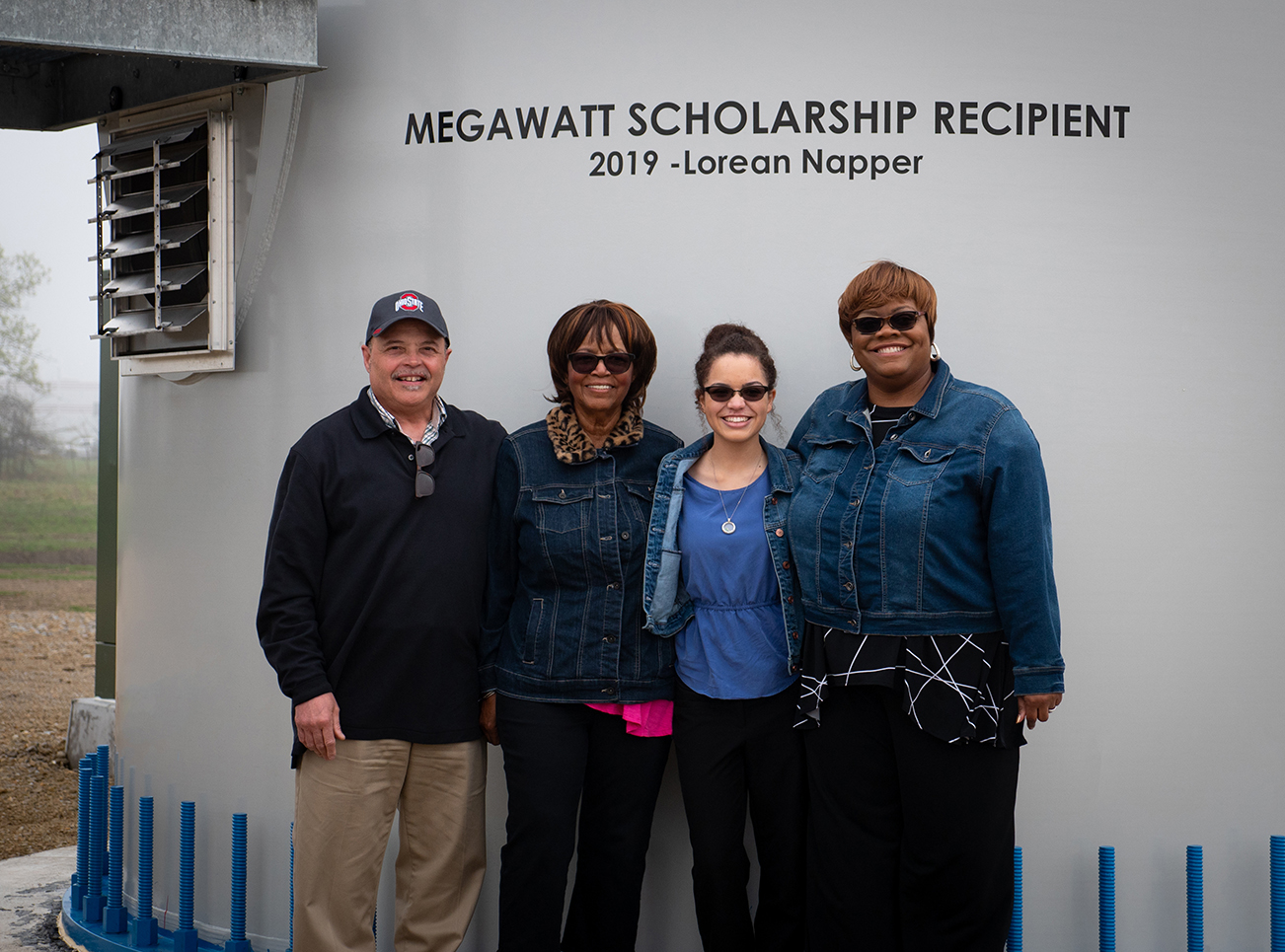
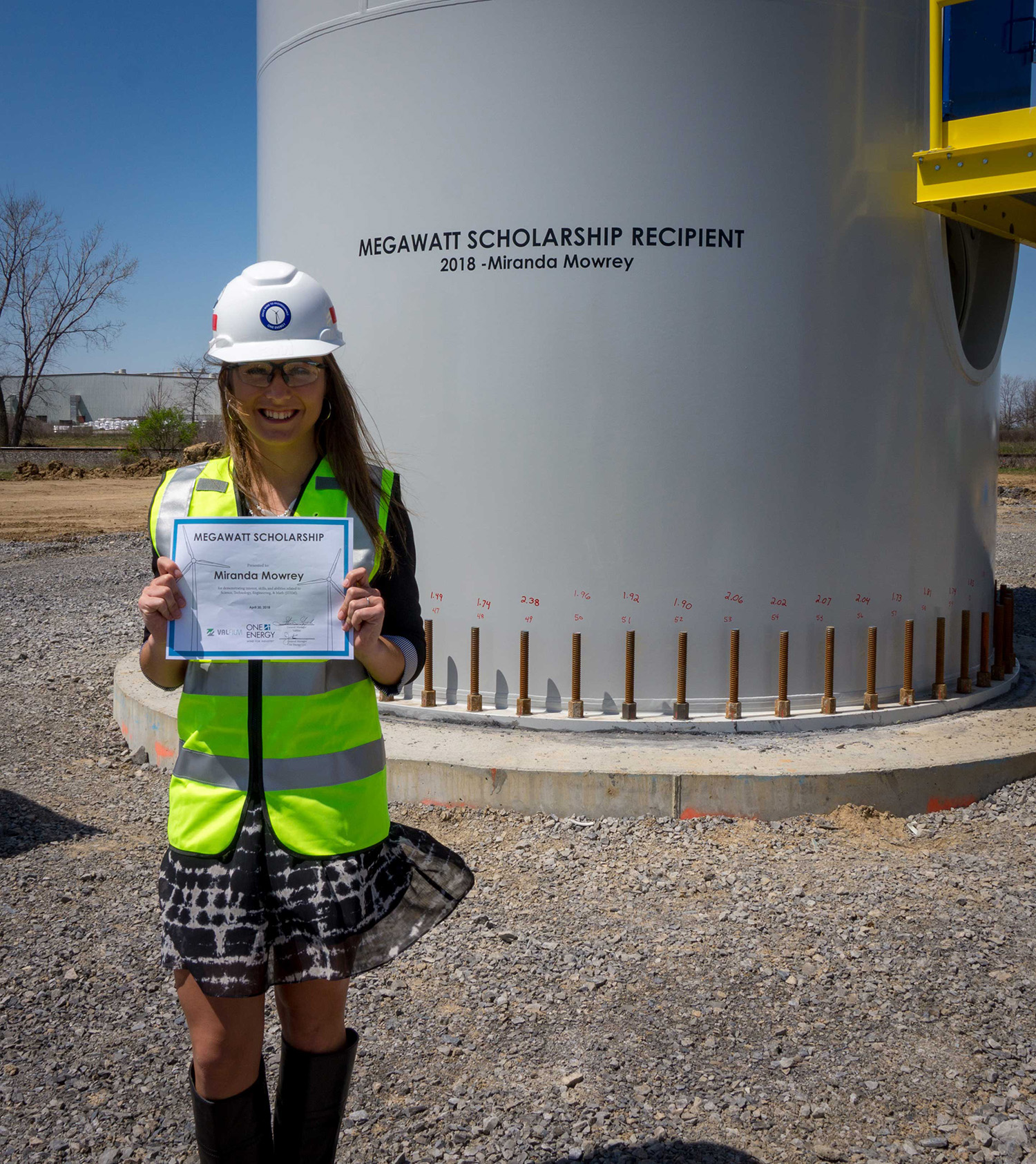
View more photos of past recipients here and contact us to request information flyers to share with your community.
Learn more about Megawatt Scholarships and eligibility here.

Just write the first draft. Then, expect your coworkers to trash it. These are the first two steps my team and I take when producing written communication pieces, and we believe it leads to great results.
Typically, there is far too much group discussion in the abstract stage. Groups are great for theory and horrible for execution. Writing by group is nonsense. After some initial philosophical chat on what the document should be, I have found that the best thing to do is have one person take the first pass on their own.
One thing is certain when the first draft is done: it is not the way everyone else would have done it. This begins the “robust feedback” (trashing) process. If everyone, including the author, is willing to engage candidly in the feedback process, the document can quickly transform and improve. The resulting document is usually better than any one of the team members would have written on their own.
This process is fraught with issues, however, and it has taken time to find what works for us. These are the tricks we’ve learned along the way:
- Don’t fall in love with the first draft.
Know from the beginning that the document is going to be trashed. That does not mean you don’t put in your best effort, but it does mean that you don’t get attached to the document as is. - Have one person own the document.
Someone must be in charge. It may be the highest-ranking person on the team, it may be the technical expert on the topic, or it may be the person with the functional responsibility for the document. Whoever it is, there must be a committee of one who makes the call as the document goes through the iteration process. Teams are great for ideas and horrible for finalization. Individuals finalize things. - Ignore nuance in round one.
People tend to focus on grammar, word choice, and subtleties in the first round. It is a generally a waste of time until the document has been honed. The first draft is often substantially changed, and the nuances that people spent time on become moot. Save grammar and word choice for one or two detail-oriented people at the end. - Vary the sacrificial lamb.
No one likes being the person to write the first draft. But it is a necessary part of the process. Alternating first draft authors not only shares the burden, it also sets the tone. As much as the document evolves, you can almost always see the first draft’s soul live on. It’s good for all team members to know the feeling of having their document trashed. It makes them better when they are editing other peoples’ documents. - Don’t worry about credit.
The glory belongs to the company, not the individual. If everyone can align on that, then the process works great. If people are jockeying for credit, things quickly go awry. Often there is strategic value for the company in deciding who the named author is, and that strategic value should govern. - Be willing to trash your own work.
After you hear other opinions, yours will often evolve. Go with it. - Encourage new team members to go through the process.
Colleges have done a horrible job preparing students to efficiently collaborate. They focus on participation, credit, and “group decision-making skills” (whatever those are supposed to be). In the for-profit world, we need the best result as fast as possible while utilizing as few company resources as possible. As the saying goes, time is money. We are perfectly comfortable using the time of one employee to revise a piece before we spend time on it as a team.
So, as you read this Executive Thought and think about how you would have done it better, that is a good thing. In this case I own this document, so I decided how to get my point across. But, don’t think for a second that we don’t go through the same process I describe above, even on an Executive Thought.
Jereme Kent is the CEO of One Energy.

Wind turbines are very tall and their components are quite heavy – which is why their foundations must be extremely strong.
Different stages from a One Energy wind turbine foundation pour are highlighted in this week’s Wind Views. Concrete is delivered via Telebelt, and members of our Construction Team work to evenly place, spread, and smooth the concrete.
Want to know more about concrete (what it is, how it’s made, etc.)? Check out our Science Shorts video “Concrete vs. Cement.”
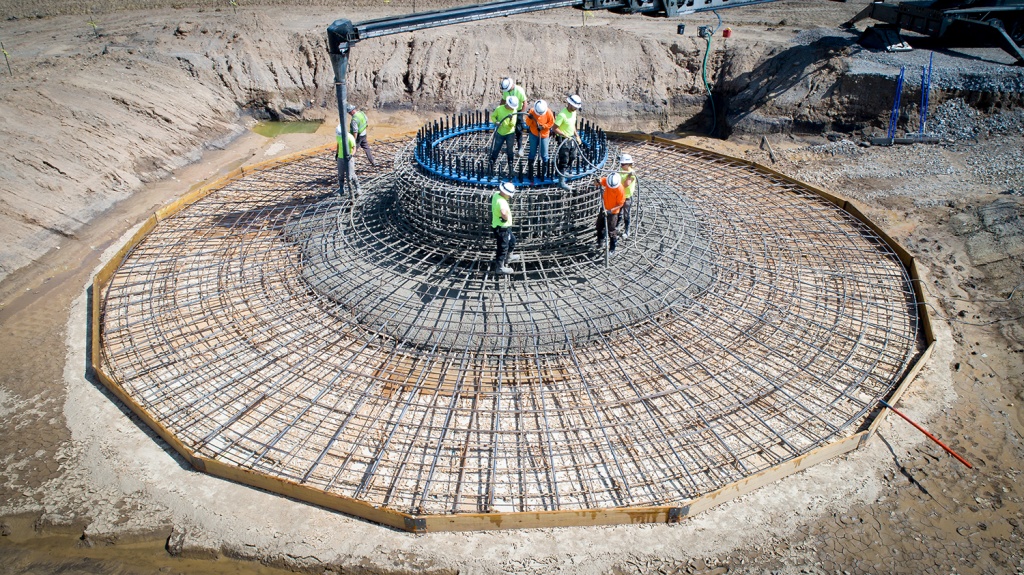

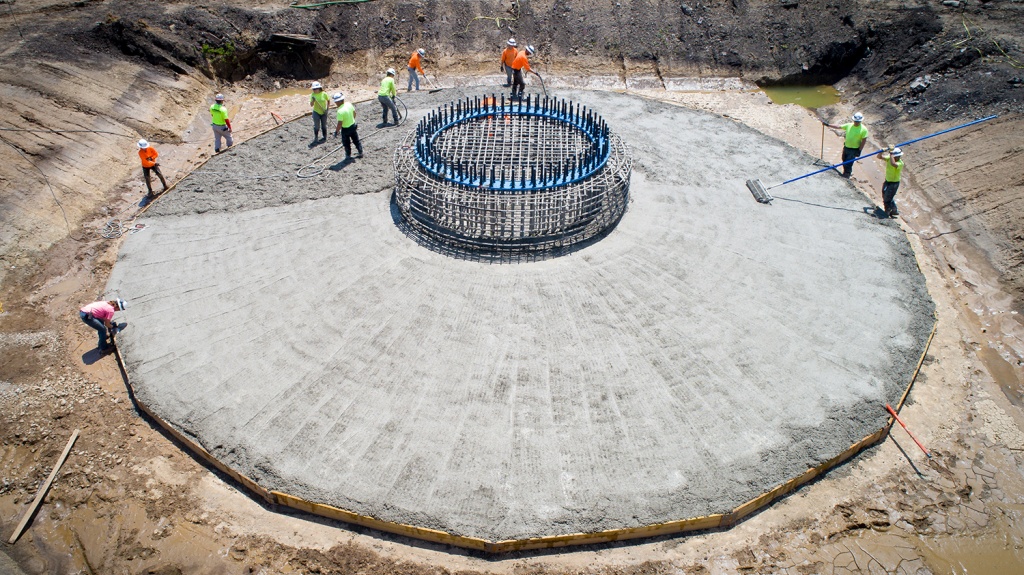

This week’s Wind Study question uses math and percentages to solve two homework problems related to turbine siting, wake loss, and energy production.
We’ll need your help determining estimated energy production values, on both an annual basis and for a particular month. (But don’t worry – this week’s question has all the information you’ll need to calculate these values!)
Download this week’s Wind Study Homework Question (and check back Friday for the answer!) This question can also be found on our Facebook and Twitter accounts.
